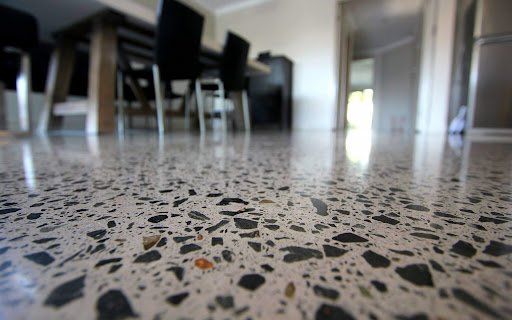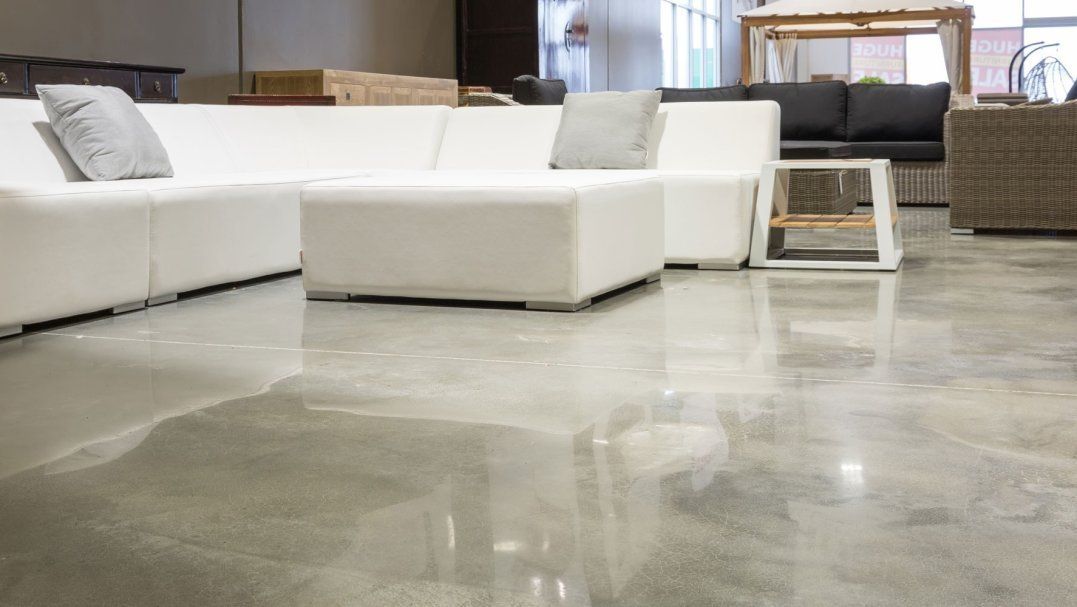Explaining Polished Concrete Floors
Polished concrete consists mainly of a mix of stone or gravel aggregate, cement, and water. This blend creates a versatile and robust flooring material. Once it hardens, the concrete is ground and polished to a smooth finish before a protective layer is applied. This finishing process enhances the concrete's strength and aesthetic appeal.
The Rise of Polished Concrete in Design
Once confined to industrial settings, polished concrete is now a sought-after flooring option in homes and commercial spaces. Its surge in popularity is due in part to its raw, minimalistic charm which suits the increasingly popular industrial design trend. Additionally, consumers appreciate its environmental benefits since concrete is a sustainable and long-lasting material.
Affordability of Polished Concrete
Contrary to misconceptions, the cost of polished concrete flooring is surprisingly reasonable. Its affordability extends to both installation and upkeep. For properties that already possess a concrete base, renewing the existing surface can be particularly cost-efficient, combining longevity and cost-effectiveness.
Benefits of Polished Concrete for Businesses
Polished concrete is favored in various commercial environments due to several advantages. These include its relatively quick installation time, minimal maintenance, and resistance to wear and tear. Its contemporary aesthetic also contributes to a business's marketability.
Utilizing Polished Concrete in Residential Areas
Versatility and low maintenance make polished concrete suitable for any part of a home. From kitchens and bathrooms to general living areas, this flooring option offers both functionality and a stylish aesthetic. It pairs well with floor rugs and can even accommodate underfloor heating systems for added comfort.
Temperature Regulation of Polished Concrete Floors
Polished concrete possesses excellent thermal storage properties, allowing it to absorb and retain heat. This means that homes with such floors can benefit from steady warmth, even after heating systems are turned off, debunking the myth that concrete floors are inherently cold.
Comparing Exterior and Interior Polished Concrete
The variety of polished concrete flooring includes options tailored for either indoor or outdoor use. Outdoor surfaces are generally finished coarser to prevent slipperiness, whereas indoor floors typically have a smoother finish. Honed concrete and grind and seal finishes are alternative options for outdoor areas, combining aesthetics with practicality.
Maintenance of Polished Concrete
Cleaning and maintaining polished concrete is straightforward, with few steps required. Routine sweeping and mopping suffice for regular upkeep. Using a neutral pH cleaning agent is recommended to ensure easy dirt removal.
Installation Process of Polished Concrete
The creation of a polished concrete floor is an intricate process that calls for professional expertise to avoid structural issues. This process can vary depending on preferences such as desired hydronic heating or level of grind exposure. Installation generally entails surface preparation, potential placement of heating elements, concrete pouring, and the necessary finish work.
Laying New Concrete Over the Old
Revitalizing an aged concrete floor by adding a new layer on top is viable, but not without challenges. Proper preparation is crucial to prevent improper bonding and ensure durability. If not done correctly, this could lead to a compromised surface that's more prone to cracking.


